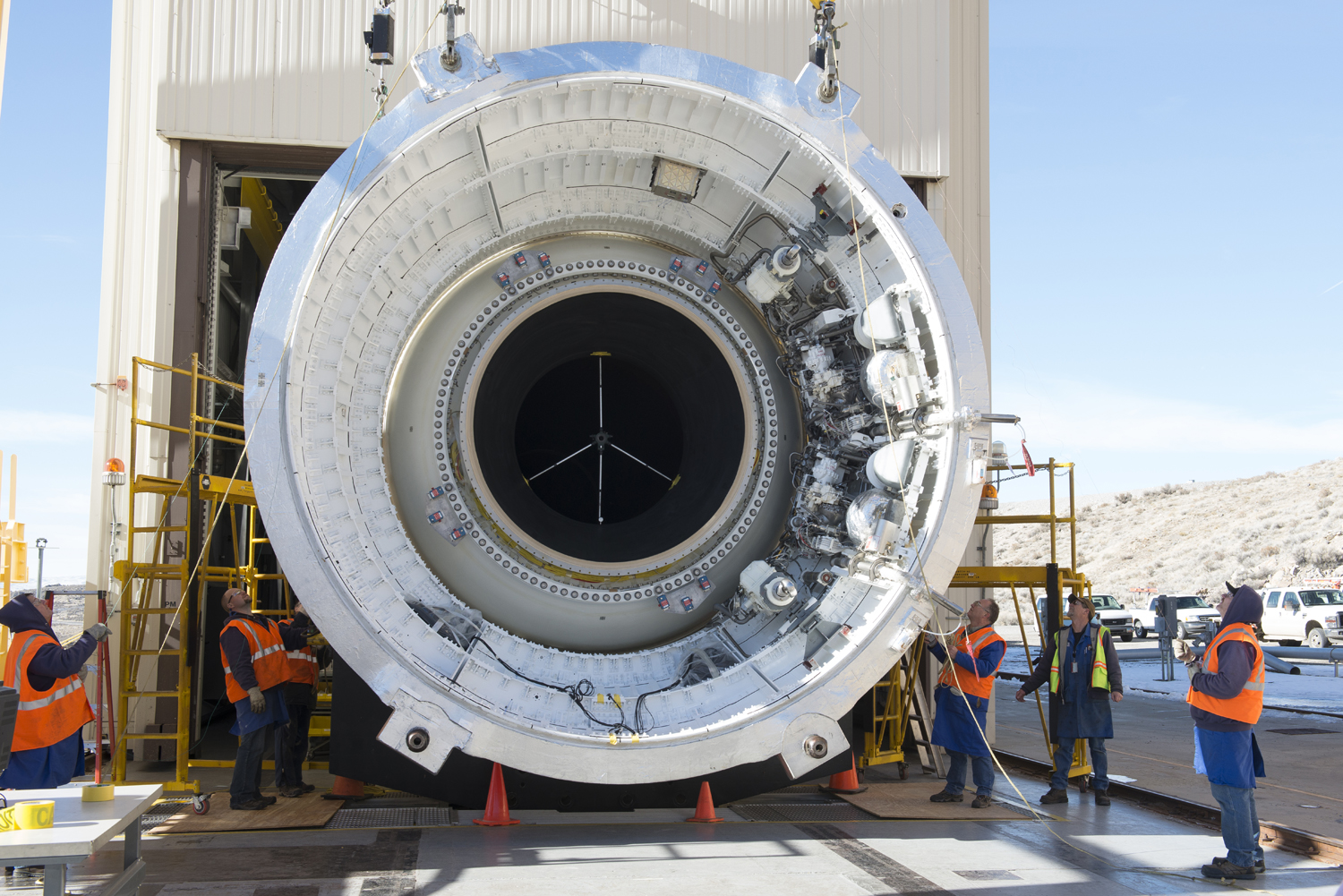The largest, most powerful booster ever built for NASA’s new rocket, the Space Launch System (SLS), will fire up for a ground test at 11:30 a.m. EDT (9:30 a.m. MDT) Wednesday, March 11, at Orbital ATK Propulsion Systems’ test facilities in Promontory, Utah.
NASA Television will air a NASA Social on Tuesday, March 10 and the test on Wednesday.
The two-minute static test is a significant milestone for the SLS as part of NASA’s journey to Mars, and follows years of development. It is one of two ground tests to qualify the booster for flight. A second test is planned for early 2016. Once qualification is complete, the hardware will be ready to help send the rocket, along with NASA’s Orion spacecraft, on its first flight test.
Media events before and after the test include:
Tuesday, March 10 (all times are listed as EDT):
- 10 a.m. – Media tour of Orbital ATK facilities to see how the world’s most powerful booster is made
- 3 p.m. – NASA TV airs NASA Social with agency and Orbital ATK representatives
- 4:30 p.m. – Media interviews with NASA and Orbital ATK representatives
Wednesday, March 11
- 7 a.m. – Media availability in front of the booster before test with NASA and Orbital ATK representatives
- 9 a.m. – All media must be present at the Orbital ATK lobby for transportation to the press site
- 11 a.m. – NASA TV begins coverage of SLS booster test
- 12:45 p.m. – Post-test media availability for on-site media (not on NASA TV)
- Approximately 1:30 p.m. – post-test motor viewing approximately two hours after the test
Members of the media interested in covering the events must contact Orbital ATK’s Kay Anderson at 435-230-2787 or kay.anderson@orbitalatk.com.
A public viewing area is available along State Road 83 North approximately 20 miles west of Corinne, Utah. The gate to the public viewing area opens at 7 a.m. MDT Wednesday. Overflow parking is available, if needed.
When completed, two five-segment, solid-rocket boosters and four RS-25 main engines will power the SLS as it begins its deep space missions. The boosters operate in parallel with the main engines for the first two minutes of flight, providing more than 75 percent of the thrust needed for the rocket to escape Earth’s gravitational pull.
The first flight test of the SLS will feature a configuration for a 70-metric-ton (77-ton) lift capacity and carry an uncrewed Orion spacecraft beyond low-Earth orbit to test the performance of the integrated system. As the SLS is updated, it will provide an unprecedented lift capability of 130 metric tons (143 tons) to enable missions even farther into our solar system.
A map for the public viewing area for the test is at:
http://go.nasa.gov/1zdgL8U
For NASA TV streaming video, downlink and schedule information, visit:
https://www.nasa.gov/nasatv
For more information on SLS, visit:
https://www.nasa.gov/sls
-end-
Rachel Kraft
Headquarters, Washington
202-358-1100
rachel.h.kraft@nasa.gov
Kim Henry
Marshall Space Flight Center, Huntsville, Ala.
256-544-0034
kimberly.h.henry@nasa.gov
Kay Anderson
Orbital ATK
435-230-2787
kay.anderson@orbitalatk.com




























